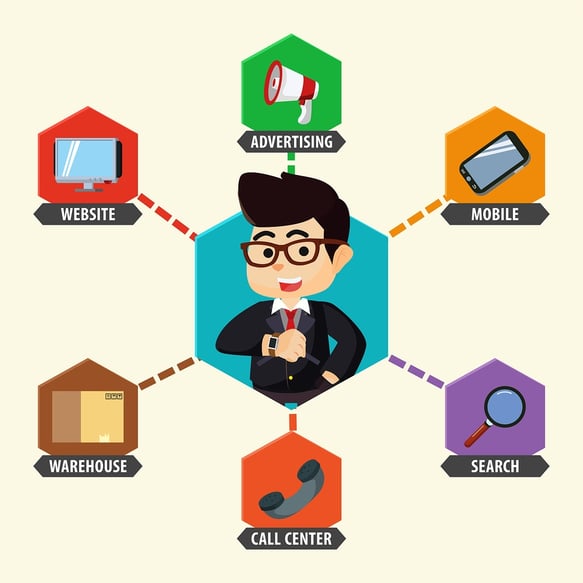
There’s no denying that technology plays an increasingly important role in our day-to-day lives. Already, it seems like the line between our online lives and our real lives are starting to blur. So what does this mean for you as a marketer or as a small business owner? It means you need to go ‘holistic’ – and by this we mean you need to adopt an omni-channel experience.
Maybe you’ve heard of omni-channel, or maybe you haven’t. However, the term has earnt itself quite the buzzword status in the marketing world. It’s not just ‘the next big thing’. It’s a crucial aspect of the modern consumer and buying cycle.
What is omni-channel?
Omni-channel is a multi-channel approach to marketing and sales that aims to provide customers with a seamless shopping experience whether they are shopping online, by phone or in a store. However, there is a difference between the two omni and multi-channels.
Essentially, the difference between the two comes down to the depth of integration. Omni-channel experiences use multiple channels, yet not all multi-channels are omni-channel. What this means is that you can have incredible mobile marketing, amazing social media campaigns and a great website, but if they don’t work well together, it’s not omni-channel.
It’s easy enough for businesses to have a website, and Facebook, LinkedIn and Twitter accounts. Yet what many businesses are unable to do is provide a unified experience and coherent messages across the channels.
Should every business adopt an omni-channel approach?
Marketo provides an excellent explanation about the importance of omni-channel. They say businesses and marketers “now need to provide a seamless experience, regardless of channel or device. Consumers can now engage with a company in a physical store, on an online website or mobile app, through a catalog, or through social media. They can access products and services by calling a company on the phone, by using an app on their mobile smartphone, or with a tablet, a laptop, or a desktop computer. Each piece of the consumer’s experience should be consistent and complementary.”
Safe to say, no matter what business you’re in, now is the time to start thinking about creating an omni-channel for your customers. What really makes the method so effective is how it is created based on consumer behaviour and creates a shopping experience that is highly personalised.
How to create an omni-channel experience
In theory, the omni-channel experience is an incredibly effective marketing tool. In reality? A lot of businesses are struggling to deliver the right experience. This is because it’s not easy to create a well-developed omni-channel experience straight away. Attempting to manage and provide a seamless customer experience across all digital, social, email, direct mail and every other touch point cannot be done overnight. For this reason, it’s important to start slow. Below are some tips to help you create your first omni-channel strategy.
1. Know your customers
If you don’t know who your customers are – their likes and dislikes, their needs and problems, their buying habits – you need to start learning. Developing this data will greatly help you create an enhanced customer experience. By collecting and analysing customer data, you can then start developing your buyer personas, which will also help you understand how to create and disseminate your content.

2. Have the right data
Data is everything, and the insights you can learn about your customers/audience from various data sets is invaluable. However, it’s important you understand and figure out which data needs the most attention. According to Neustar, email addresses, online cookies, mobile numbers, home addresses and IP addresses are the most significant consumer data identifiers. It’s also important you remember to consistently pull new data as your customer profiles will continue to evolve over time.
3. Be where your customers are
The truth is you can’t be everywhere. The good news? You only need to be where your customers are. To really reap the rewards of omni-channel marketing, it’s essential that you take small, data-determined steps that help you connect with your customers. In fact, trying to be everywhere at once will only be to your detriment – a waste of time, money and efforts.
Consumers want a tailored experience – they want to be spoken to on a personal level. If you can do that, then you’re well on your way to creating a successful business.
To witness omni-channel marketing in action, check out these 7 awesome examples.



